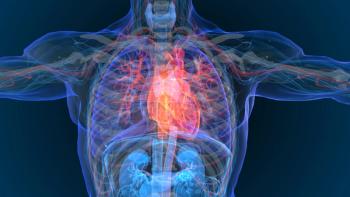
- Volume 0 0
Alternatives to HRT for the Treatment of Hot Flashes
Clear communication about risks and benefits and careful follow-up can help women find potentially effective therapies for hot flashes.
Ms. Wick is a senior clinical researchpharmacist at the National CancerInstitute, National Institutes ofHealth, Bethesda, Maryland. Theviews expressed are those of theauthor and not those of any governmentagency.
During perimenopause, mostwomen experience hot flashesof varying frequency andintensity. When they occur more than afew times daily, or even hourly, theseepisodes can be quite disruptive andare often accompanied by vaginal dryness,decreased libido, forgetfulness,difficulty concentrating, and nightsweats that disturb sleep.
Although estrogen and progesteroneare used to treat hot flashes, theWomen's Health Initiative (WHI) studyfound that routine use of these therapiesincreases some specific risks.1-3Many women who had used estrogenfor hot flashes panicked and stoppedtheir medications abruptly, and nowthose who might benefit from hormonereplacement therapy (HRT) aresearching for alternatives. For this reason,pharmacists need to be fullyaware of self-care and medical treatmentoptions that can help womenmanage menopausal symptoms.
Hot flashes usually subside over ayear or 2 after menopause, but in theinterim, these sudden sensations ofintense heat, frequently accompaniedby profuse sweating and facial or bodyflushing, are intrusive and embarrassing.The chill that follows can be terriblyuncomfortable. Stress, heavy alcoholuse, and cigarette smoking seem toexacerbate hot flash frequency andintensity. Sufferers may report anxiety,irritability, or mild to severe heart palpitations.Hot flashes can be especiallydifficult for women who cease menstruatingabruptly from chemotherapy,antiestrogen treatment for breast cancer,or surgical removal of the ovaries.4
When to Treat
If hot flashes are mild or infrequent,treatment is usually unnecessary.Women who suffer moderate to severeor frequent hot flashes often look forrelief, and some lifestyle choices mayhelp. Breathing exercises, for example,have been shown to reduce hot flashesand emotional symptoms significantly5,6(Table).
If hot flashes are severe and disruptive,the patient may ask for medication.Short-term HRT—at the lowestdose needed for the shortest possibletime—remains the most effectivetreatment. The WHI study linked HRT toan increased risk of breast cancer, cardiovasculardisease, stroke, venousthromboembolism, and dementia. Italso confirmed estrogen's protectiverole in bone health.1-3
Pharmacists need to know thattreatment of menopausal symptomssuch as hot flashes was not a WHI endpoint; WHI was designed to determineif HRT prevents chronic diseases likeheart disease and osteoporosis. Theaverage age of WHI participants was63, or about 12 years postmenopausal.Since the study was published, it hasbecome more evident that dependingon the patient's age, hormone therapyhas different benefits and risks.7-11
Before menopause, estrogen?progestinbirth control pills can amelioratehot flashes and other perimenopausalsymptoms by preventing fluctuatinghormones. Perimenopausal womenwho smoke, have diabetes, or have apersonal or family history of cardiovasculardisease or breast cancer shouldavoid using estrogen for hot flashrelief.12-14
Women who have an intact uterusshould not take unopposed estrogen;they must also take progesterone.Unopposed estrogen increases risk ofendometrial malignancy.
Nonhormonal Alternatives
Interest in nonhormonal therapies ishigh at this time. Selective serotoninreuptake inhibitor (SSRI) antidepressantmedications can reduce the numberand severity of hot flashes;researchers believe their ability toinhibit serotonin reuptake may significantlyreduce vasomotor symptoms ofmenopause. SSRIs are more likely towork if the patient's main complaintsare hot flashes, irritability, or moodswings. Pharmacists need to providethe standard guidance about sideeffects, counsel patients to take thesemedications early in the day, especiallyif insomnia is a problem, and adviseagainst abrupt discontinuation.15-20
Numerous studies have been conductedusing clonidine, which mayreduce peripheral vascular reactivity;however, many of them are older,small, or of poor design.21-25 To date, thestrongest evidence of clonidine's utilityis in women with tamoxifen-inducedhot flashes.21,25 Because hot flashes inwomen with breast cancer are commonand pose a management problem(estrogen therapy is contraindicated,and tamoxifen interacts with manydrugs), this is an important option.
Black cohosh may reduce or preventhot flashes, depression, and anxiety,26,27 but a large, randomized, controlled,placebo-blinded study (N = 351)could not confirm its efficacy in eitherpremenopausal or postmenopausalwomen.28 (This same study found nobenefit in soy supplements.) Althoughmost of this herb's side effects are mildand transient (gastrointestinal upset orrash), numerous studies and casereports have documented blackcohosh's rare but potential hepatotoxicity,which can cause death.29-33
Researchers recently have had encouragingpreliminary results with 49 gof crushed flaxseed daily in a small study(N = 30) of perimenopausal women,noting reductions of >50% in hot flashseverity and frequency. Mild or moderateabdominal distention was common,as was mild diarrhea. This dietary therapyneeds more study to determine if itis more effective than placebo.34
Conclusion
Although the number of alternativetreatments for hot flashes is increasing,hormonal therapies are still themost effective. Pharmacists need to befamiliar with the risks and benefits ofhormonal and nonhormonal therapiesand aware of the OTC products womenmay use to find relief.
Clear communication about treatmentrisks and benefits, individualizationof treatment to meet patient needsand beliefs, and careful follow-up canhelp women find potentially effectivetherapy. The good news: Since the WHIresults were published, researchershave documented a significant decreasein prescriptions for HRT, but a significantlyhigher percentage of prescriptionfilling. This seems to mean thatwomen who choose HRT do so withgreater certainty in their choice.35
References
- Anderson GL, Judd HL, Kaunitz AM, et al. Effects of estrogen plus progestin on gynecologic cancers and associated diagnostic procedures: the Women's Health Initiative randomized trial. JAMA. 2003;290:1739-1748.
- Rossouw JE, Anderson GL, Prentice RL, et al. Risks and benefits of estrogen plus progestin in healthy postmenopausal women: principal results from the Women's Health Initiative randomized controlled trial. JAMA. 2002;288:321-333.
- Anderson GL, Limacher M, Assaf AR, et al. Effects of conjugated equine estrogen in postmenopausal women with hysterectomy: the Women's Health Initiative randomized controlled trial. JAMA. 2004;291:1701-1712.
- Obermeyer CM, Reher D, Saliba M. Symptoms, menopause status, and country differences: a comparative analysis from DAMES. Menopause. 2007;14:788-797.
- Irvin JH, Domar AD, Clark C, Zuttermeister PC, Friedman R. The effects of relaxation response training on menopausal symptoms. J Psychosom Obstet Gynaecol. 1996;17:202-207.
- Freedman RR, Woodward S, Brown B, Javaid JI, Pandey GN. Biochemical and thermoregulatory effects of behavioral treatment for menopausal hot flashes. Menopause. 1995;2:211-218
- Prentice RL, Langer RD, Stefanick ML, et al. Combined analysis of Women's Health Initiative observational and clinical trial data on postmenopausal hormone treatment and cardiovascular disease. Am J Epidemiol. 2006;163:589-599.
- Grodstein F, Manson JE, Stampfer MJ. Hormone therapy and coronary heart disease: The role of time since menopause and age at hormone initiation. J Womens Health. 2006;15:35-44.
- Manson JE, Allison MA, Rossouw JE, et al; WHI and WHI-CACS Investigators. Estrogen therapy and coronary-artery calcification. N Engl J Med. 2007;356:2591-2602.
- Anderson GL, Limacher M, Assaf AR, et al; Women's Health Initiative Steering Committee. Effects of conjugated equine estrogen in postmenopausal women with hysterectomy: the Women's Health Initiative randomized controlled trial. JAMA. 2004;291:1701-1712.
- Shumaker SA, Legault C, Kuller L, et al; Women's Health Initiative Memory Study. Conjugated equine estrogens and incidence of probable dementia and mild cognitive impairment in postmenopausal women: Women's Health Initiative Memory Study. JAMA. 2004;291:2947-2958.
- Panay N, Ylikorkala O, Archer DF, Gut R, Lang E. Ultra-low-dose estradiol and norethisterone acetate: effective menopausal symptom relief. Climacteric. 2007;10:120-131.
- Prior JC, Nielsen JD, Hitchcock CL, Williams LA, Vigna YM, Dean CB. Medroxyprogesterone and conjugated oestrogen are equivalent for hot flushes: a 1-year randomized double-blind trial following premenopausal ovariectomy. Clin Sci (Lond). 2007;112:517-525.
- Kaunitz AM. Oral contraceptive use in perimenopause. Am J Obstet Gynecol. 2001;185(2 Suppl):S32-S37.
- Stearns V, Beebe KL, Iyengar M, Dube E. Paroxetine controlled release in the treatment of menopausal hot flashes: a randomized controlled trial. JAMA. 2003;289:2827-2834.
- Gordon PR, Kerwin JP, Boesen KG, Senf J. Sertraline to treat hot flashes: a randomized controlled, double-blind, crossover trial in a general population. Menopause. 2006;13:568-575.
- Kerwin JP, Gordon PR, Senf JH. The variable response of women with menopausal hot flashes when treated with sertraline. Menopause. 2007;14:841-845.
- Loprinzi CL, Sloan JA, Perez EA, et al. Phase III evaluation of fluoxetine for treatment of hot flashes. J Clin Oncol. 2002;20:1578-1583.
- Loprinzi CL, Kugler JW, Sloan JA, et al. Venlafaxine in management of hot flashes in survivors of breast cancer: a randomised controlled trial. Lancet. 2000;356:2059-2063.
- Stearns V, Isaacs C, Rowland J, et al. A pilot trial assessing the efficacy of paroxetine hydrochloride (Paxil) in controlling hot flashes in breast cancer survivors. Ann Oncol. 2000;11:17-22.
- Pandya KJ, Raubertas RF, Flynn PJ, et al. Oral clonidine in postmenopausal patients with breast cancer experiencing tamoxifen-induced hot flashes: a University of Rochester Cancer Center Community Clinical Oncology Program study. Ann Intern Med. 2000;132:788-793.
- Edington RF, Chagnon JP, Steinberg WM. Clonidine (Dixarit) for menopausal flushing. Can Med Assoc J. 1980;123:23-26.
- Nagamani M, Kelver ME, Smith ER. Treatment of menopausal hot flashes with transdermal administration of clonidine. Am J Obstet Gynecol. 1987;156:561-565.
- Nappi C, Petraglia F, de Chiara BM, et al. The effect of various drugs with neuroendocrine activity and transdermal estradiol on plasma gonadotropin concentrations after ovariectomy in reproductive-aged women. Acta Obstet Gynecol Scand. 1991;70:435-439.
- Goldberg RM, Loprinzi CL, O'Fallon JR, et al. Transdermal clonidine for ameliorating tamoxifen-induced hot flashes. J Clin Oncol. 1994;12:155-158. [Erratum appears in J Clin Oncol. 1996;14:2411]
- Oktem M, Eroglu D, Karahan HB, Taskintuna N, Kuscu E, Zeyneloglu HB. Black cohosh and fluoxetine in the treatment of postmenopausal symptoms: a prospective, randomized trial. Adv Ther. 2007;24:448-461.
- McKenna DJ, Jones K, Humphrey S, Hughes K. Black cohosh: Efficacy, safety, and use in clinical and preclinical applications. Alter Ther Health Med. 2001;7:93-100.
- Newton KM, Reed SD, LaCroix AZ, Grothaus LC, Ehrlich K, Guiltinan J. Treatment of vasomotor symptoms of menopause with black cohosh, multibotanicals, soy, hormone therapy, or placebo: a randomized trial. Ann Intern Med. 2006;145:869-879.
- Levitsky J, Alli TA, Wisecarver J, Sorrell MF. Fulminant liver failure associated with the use of black cohosh. Dig Dis Sci. 2005;50:538-539.
- Lynch CR, Folkers ME, Hutson WR. Fulminant hepatic failure associated with the use of black cohosh: a case report. Liver Transpl. 2006;12:989-992.
- Whiting PW, Clouston A, Kerlin P. Black cohosh and other herbal remedies associated with acute hepatitis. Med J Austr. 2002; 177:440-443.
- Verma S, Thuluvath PJ. Complementary and alternative medicine in hepatology: review of the evidence of efficacy. Clin Gastroenterol Hepatol. 2007;5:408-416.
- Dunbar K, Solga SF. Black cohosh, safety, and public awareness. Liver Int. 2007;27:1017-1018.
- Pruthi S, Thompson SL, Novotny PJ, et al. Pilot evaluation of flaxseed for the management of hot flashes. J Soc Integr Oncol. 2007;5:106-112.
- Parente L, Uyehara C, Larsen W, Whitcomb B, Farley J. Long-term impact of the women's health initiative on HRT. Arch Gynecol Obstet. 2007;[Epub ahead of print].
Articles in this issue
almost 18 years ago
can you READ these Rxs?almost 18 years ago
Case Studiesalmost 18 years ago
WOMEN'S HEALTH WATCHalmost 18 years ago
ASTHMA WATCHalmost 18 years ago
HYPERTENSION WATCHalmost 18 years ago
ARTHRITIS WATCHalmost 18 years ago
compounding HOTLINEalmost 18 years ago
DIABETES WATCHalmost 18 years ago
A Robotic Touch?Automating Your Pharmacyalmost 18 years ago
pharmacy TECHNOLOGY productsNewsletter
Stay informed on drug updates, treatment guidelines, and pharmacy practice trends—subscribe to Pharmacy Times for weekly clinical insights.


















































































































































































































